29 Sep Why are Eavestroughs Important
If you are a homeowner, you may or may not be aware of your eavestroughs. Aware is good, but what does that mean? Did you recognize the word? Do you know what it does? What about their current condition? When was the last time you cleaned them? A common question that homeowners ask is “are eavestroughs really that important?”. At Keylo, we are here to answer your real estate and home related questions, so let’s break it down.
What are Eavestroughs?
Like the name suggests, an eavestrough is a trough or narrow channel system that runs along the perimeter of your roof, commonly referred to as gutters. To break it down, eaves are the section of your roof that extends out past the walls of your home and a trough is a conduit used to transport liquid. The general function of a eavestrough is proper water drainage for your roof.
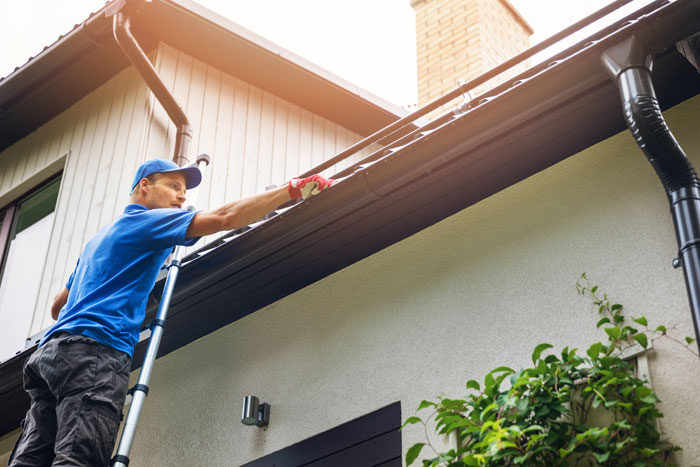
Eavestrough Anatomy
Your water drainage elements will usually be constructed out of aluminum, but are occasionally made using vinyl, wood or other metals. In tandem with the passages bordering your roof, your eavestrough system will also include:
These are pipes that run from your roof to the ground. These will carry the water that collects in your gutters to the ground and away from your house’s foundation.
This is a plate that is placed underneath the outside edge of your roof’s overhang. This element adds protection, improves aesthetics and promotes proper ventilation in your attic.
Like the soffit, the fascia is a plate that will protect your roof and foundation. The waterproof cover in between your eavestrough and soffit prevents leaking of rain, snow and debris from penetrating your houses foundation.
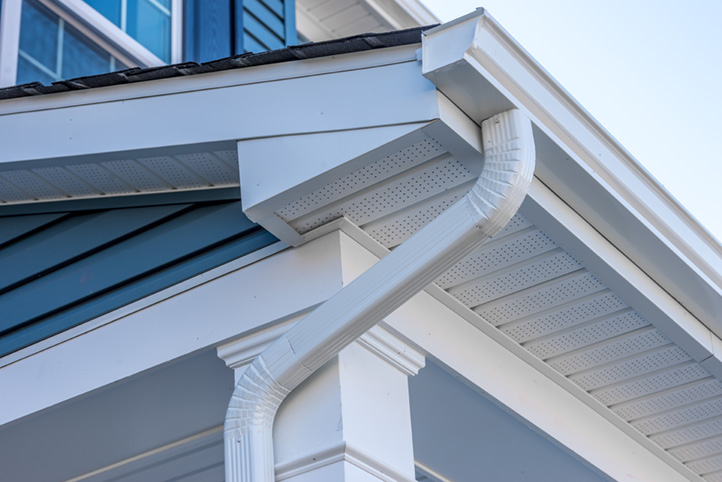
What Do They Do?
Your eavestroughs are an essential component in preventing property damage to your home by draining water collection from rain or snowfall off of your roof and away from your house. So, why is this so important and what could happen to your house without proper drainage.
Drain water off your Roof
Without adequate ability for drainage, excess moisture and water can seep in between your shingles or weigh down the integrity if they accumulate in certain areas. This can result in rot or mold to your roof’s structural material, fascia, soffit or shingles. Roof rotting poses a risk to your health from chemicals that the mold produces should they circulate in your air ventilation and living areas. Eventually, this rotting can weaken your roof enough to give out or cave in, which can be dangerous and very costly to repair.
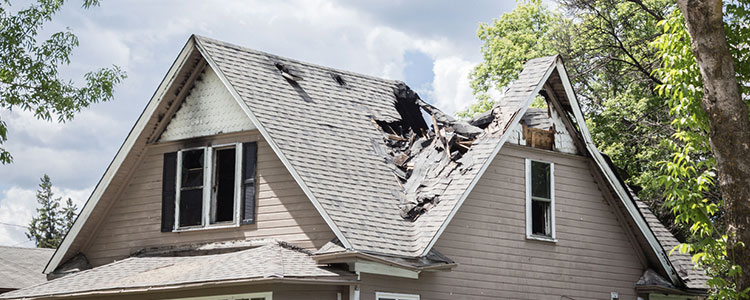
Prevent water accumulation in your Yard
If you have appropriately sloped roofing that doesn’t allow for sitting water, without gutters to catch the liquid, it will fall sporadically or potentially only in one area. Not only could this pose a safety risk if large amounts of water are dropping from your roof, it can also erode or oversaturate the soil surrounding your home. This can result in damage to your grass or even structural damage to your underground walls.
In circumstances of heavy rain pour or quick changes from cold to hot weather where snow melts rapidly, the water directed off your roof and into your yard might end up flooding if the ground drainage is not equipped to handle large volumes at once. Using troughs and multiple downspouts will facilitate the direction, placement and speed of the water to prevent flooding.
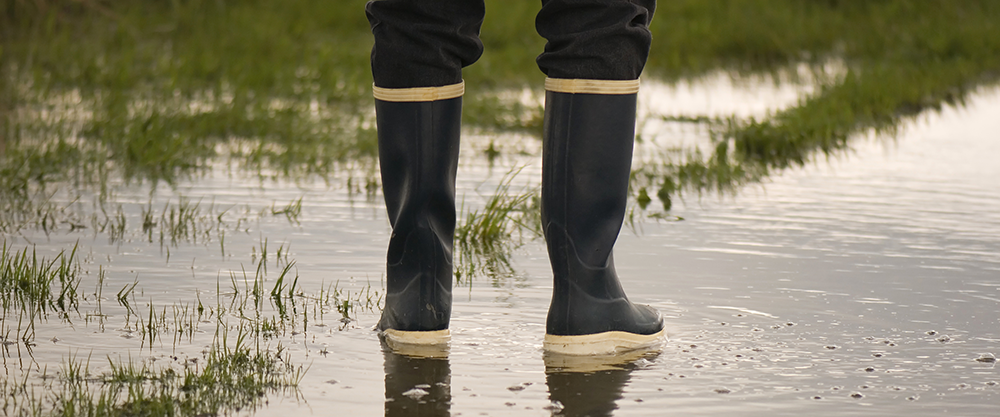
Uphold Structural Integrity
In addition to damage from your roof caving in or from water eroding your home from soil oversaturation, there are other potential ways water can compromise the integrity of your home’s structure and foundation. Water that is heavily pouring off your roof or pooling in areas along your build, can leak in through windows, doors or other entry points. This pooling causes exterior materials to erode, weaken or rust. Your foundation might crack or rot, especially in extreme changes in weather conditions where water freezes and melts repetitively. Water leaking into your home also means potential rot or mold growth throughout the interior and even flooding in your basement.
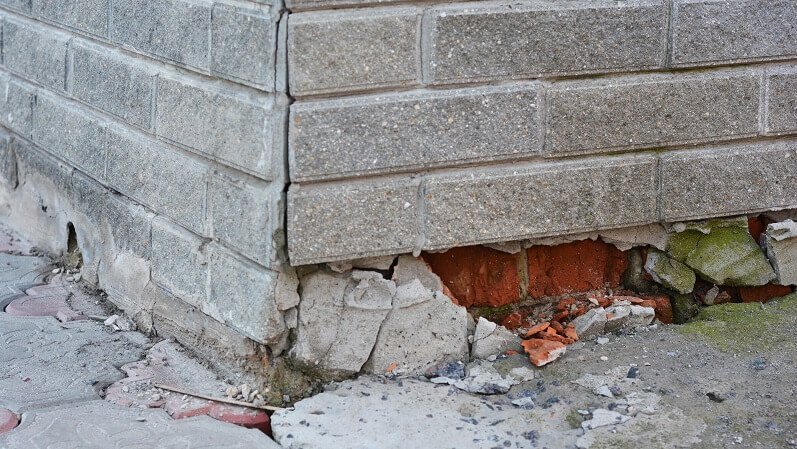
Property and Possessions
What else could be at risk, right? Well, the consequences of poor drainage, oversaturation and flooding have adverse effects on other areas of your property. Soil erosion and oversaturation impact your grass, trees and garden. Plant roots can drown in water, causing them to die, causing lawn deterioration, flowers to wilt, inedible vegetable harvests, and branches to break off your tree. Furthermore, damage can occur to your deck or patio, driveway, sidewalk and property grading.
Unfavourable Outcomes
Outside of the likely damage that threatens your home from inadequate eavestrough systems (or lack thereof), you can be facing unwelcomed attacks if your drainage is out of control. Yes, attacks… Specifically, on two different fronts.
- Legal – Not only can damage occur to your yard, foundation and structure, but also your neighbours. If water is collecting in your yard, the overflow can spill into bordering properties. More trouble can be caused if your lot is situated on higher elevation or if your roof overhang is in close proximity to that of your neighbor. Some individuals may take you court if this happens, and substantial property damage may translate into substantial settlements.
- Critter invasion – Rotting and structural damage can allow safe passage for bugs to infest your home through gaps and cracks. Moreover, bugs (especially mosquitos) breed in stagnant water. The mosquito epidemic has consumed Edmonton in recent years, an accidental swamp can turn your backyard into a mosquito incubator and the ultimate swarm home base.
The Verdict?
Water drainage systems are one of the most fundamental safeguards you can use to protect from property damage, preserve your AQI, avoid unnecessary spending on repair and prevent unwelcome bug infestations. Maintaining your home keeps the house occupants as well as your real estate investment and checkbook safe. Whether this is your forever home that you want to be comfortable in and proud of or you are planning on selling in the future, preserving the appearance and integrity of the house will determine the longevity of your home or its ability to eventually sell.
Install your eavestroughs!
If you own a property that does not come with gutters or have old, damaged ones that are no longer working, it is paramount that you look at installing a eavestrough system as soon as possible. Considering the best system for your home will depend on your budget, your desired durability and the level of maintenance you can reasonably perform. This will determine the material, shape, longevity and efficacy of the drainage system.
Maintenance
Besides ensuring a reliable and well installed eavestrough, your water drainage will need to be properly upkept. Neglecting the cleaning and/or maintenance can become just as harmful to your house and property as not having them at all. Regular care includes cleaning and clearing obstructions. Autumn leaves or other debris could clog a channel. Heavy icicles can bend or break the material. On top of the regularly occurring servicing you conduct, yearly inspections should be performed to assess for any minor repairs that may be required.
This can mean resealing seams, adjusting sloping, tightening loosened adherents or replacing a segment. The small repairs that you encounter in an inspection can be a product of normal wear and tear, harsh weather conditions or maintenance neglect.
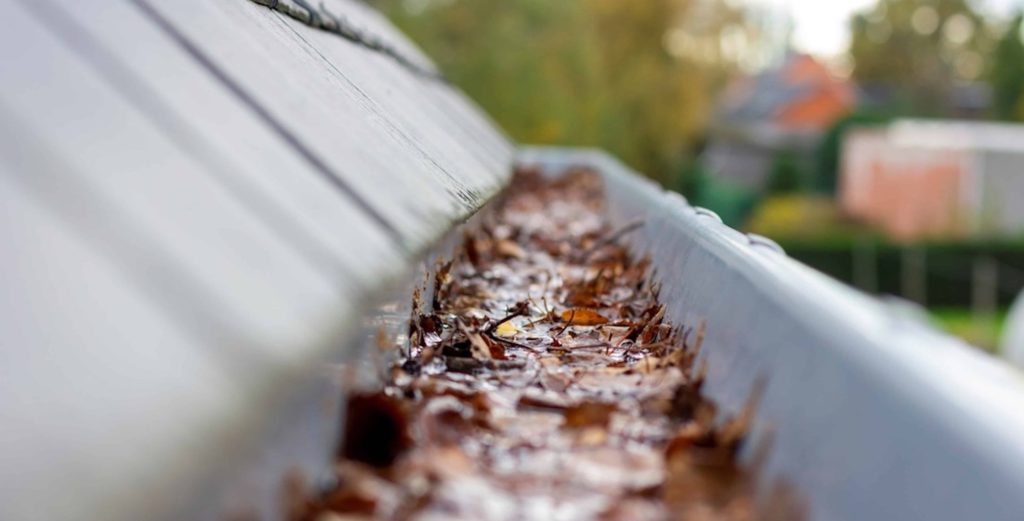
Are your eavestroughs important? Irrefutably, yes. Why are they important? Whether you have optimally functioning eavestroughs or not is going to be consequential in the protection or deterioration of your property. Implementing and sustaining suitable water drainage may seem like a needless hassle, an optional choice or a nonessential expense, but doing so can rescue you from the risk of catastrophic repercussions.




Sorry, the comment form is closed at this time.